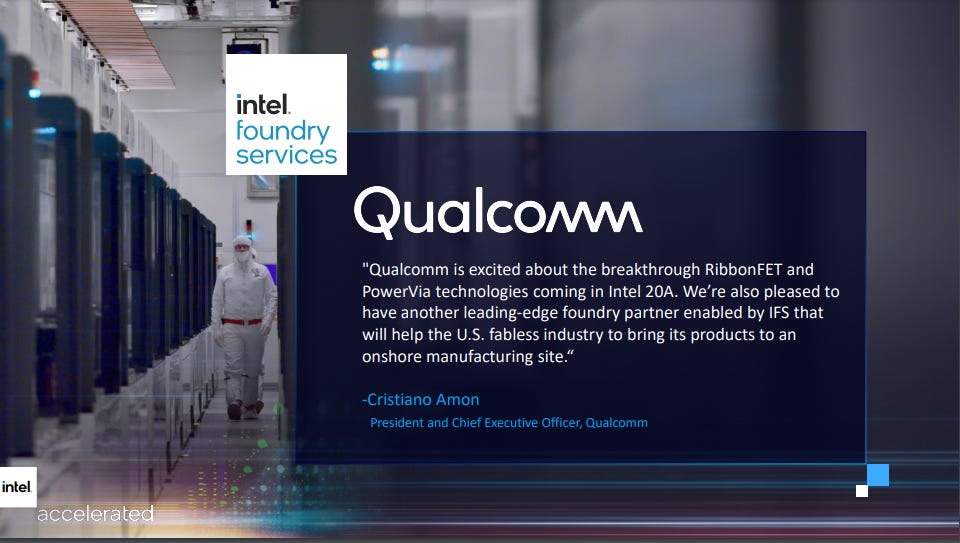- Nov 14, 2011
- 10,239
- 5,026
- 136
Starting at the 20A process in a few years. I wonder what parts they will build at Intel? If it's the laptop chips meant to compete with Intel, that's going to be weird.

I don't believe anyone shared this yet:

Intel Grossly Exaggerates Foundry “Wins” With Qualcomm And Amazon, There Are No Deals For Manufacturing Chips
Intel touted huge wins with Qualcomm and Amazon for their foundry business, but a deeper investigation reveals there are no chips deals penned. Intel will only package for Amazon, and Qualcomm is only evaluating the technology.semianalysis.substack.com
1. Amazon "win" is just for packaging, chips will still be made at TSMC
2. Qualcomm has 0 product plans for Intel yet, they are "just evaluating" (e.g. probably playing this to get better deals from Samsung and TSMC)
To call these things major customer wins ... one can only imagine the quality of those touted 100+ potential customers. Did Intel hand out fliers that give you a free lunch at their caffeteria when you fill a form to sign up as their future node customer?
The 100 potential customers just means they showed some level interest above zero.
Intel always planned their 7nm was going to be made with EUV. Do you have a source showing otherwise?

TSMC 7nm was also without EUV and it definitely seems to have been worth it.View attachment 48028
I am saying Intel 10nm was made without EUV, and that is really hard to do anything that is 90 million transistors per mm2. Intel did that but is it worth it?
Intels future node which was called 7nm, now called Intel 4, will use EUV and I never claimed they decided to not use EUV for that node. I am saying it is good they are finally using EUV for their leading node (yes it was always their intent, but we are moving from the 14nm to various 10nm transition, to the various 10nm to Intel 4 generation.)
(yes there is also an intel 7, intel 10nm is 10nm SuperFin (10SF) , and intel 7 was called 10nm Enhanced Super Fin or 10ESF but it got renamed. Not higher density just other improvements on this variant intel 10nm which is still more dense than TSMC 7nm but not some of their newer TSMC geometries)
TSMC 7nm was also without EUV and it definitely seems to have been worth it.
This brings up an interesting point.Good point.
Especially since Samsung's 7nm, which did use EUV, took longer to get to mass production. By using EUV for "N7+", but not for N7 or N7P, TSMC was able to take a bit more time to get up to speed with EUV mass production without jeopardizing the timeline for their biggest customer.
If Intel had added a few EUV layers in one of 10nm's "+" cycles they could have eased into it - and perhaps even solved some of the issues that have made 10nm such a problem for them to fully roll out. Their 7nm / Intel 4 process going all-in on EUV may not be so smooth since they lack the several years of mass production experience with EUV that TSMC and Samsung both have.



